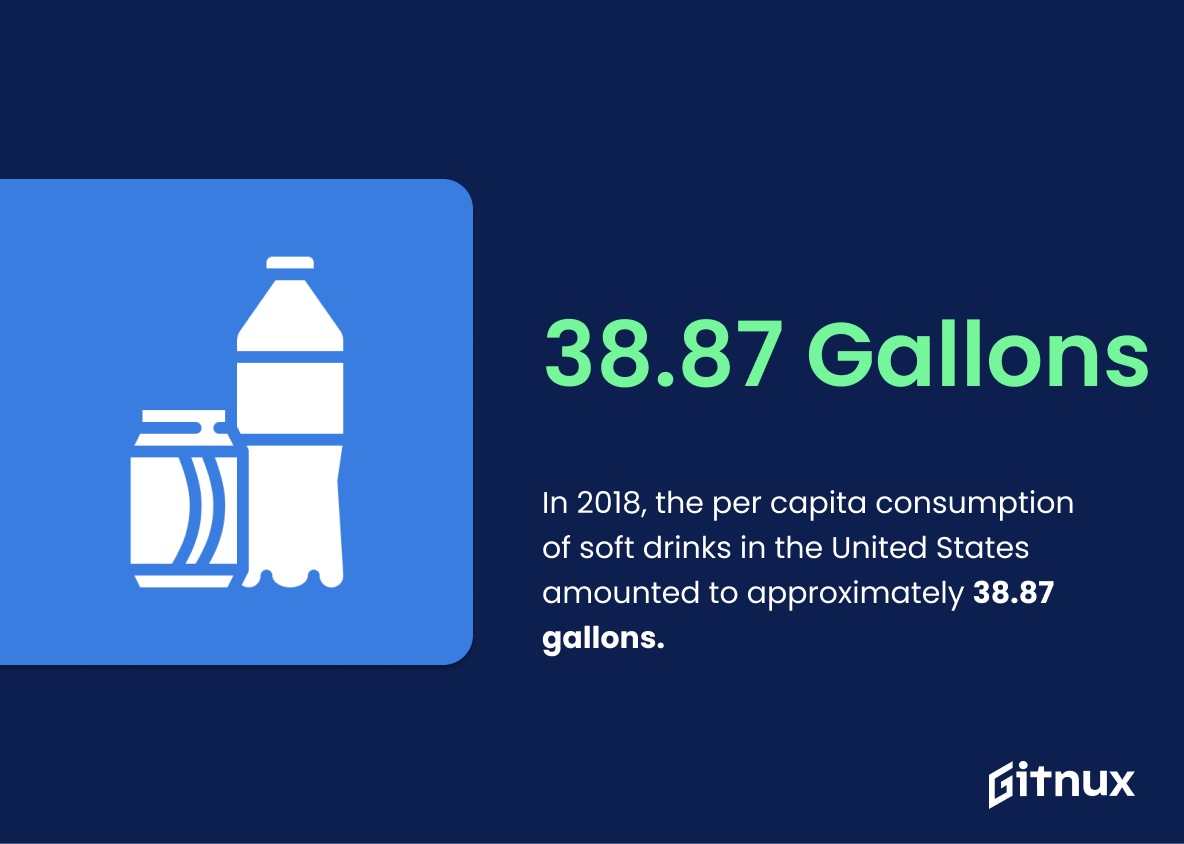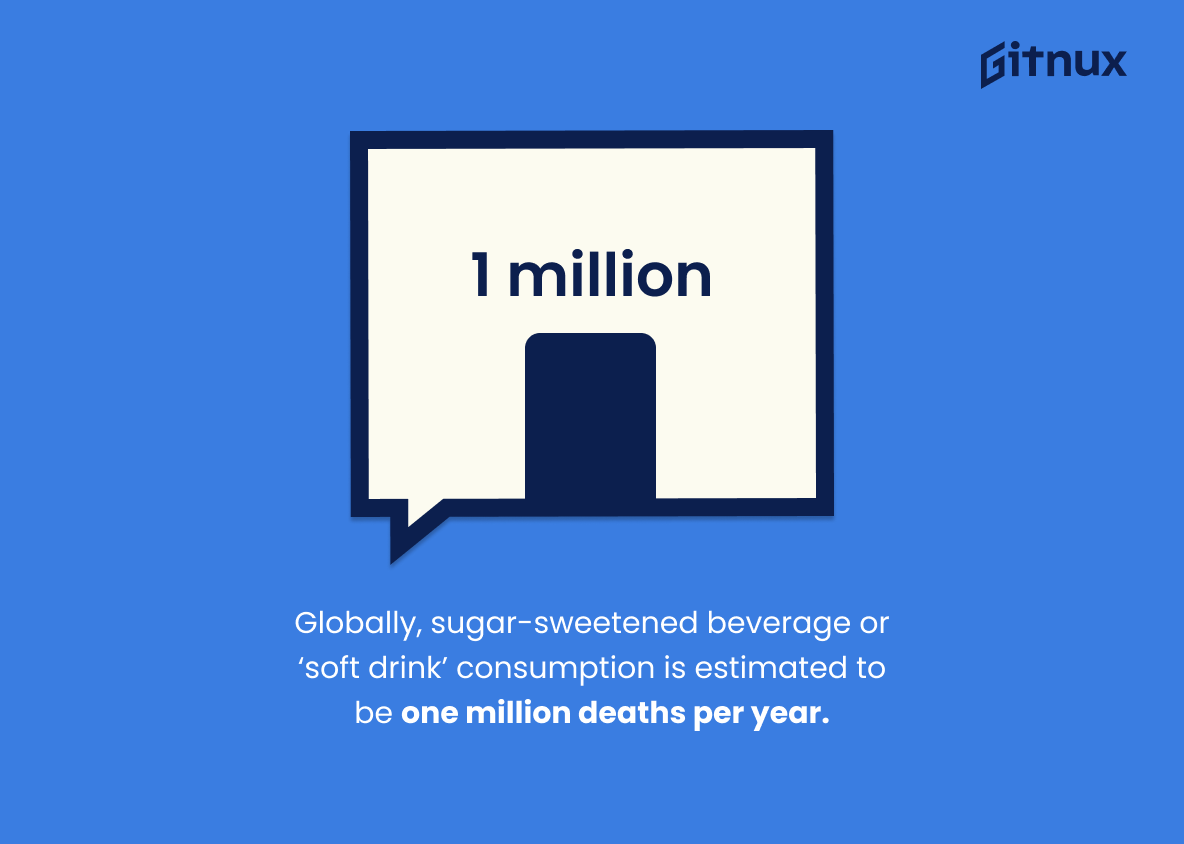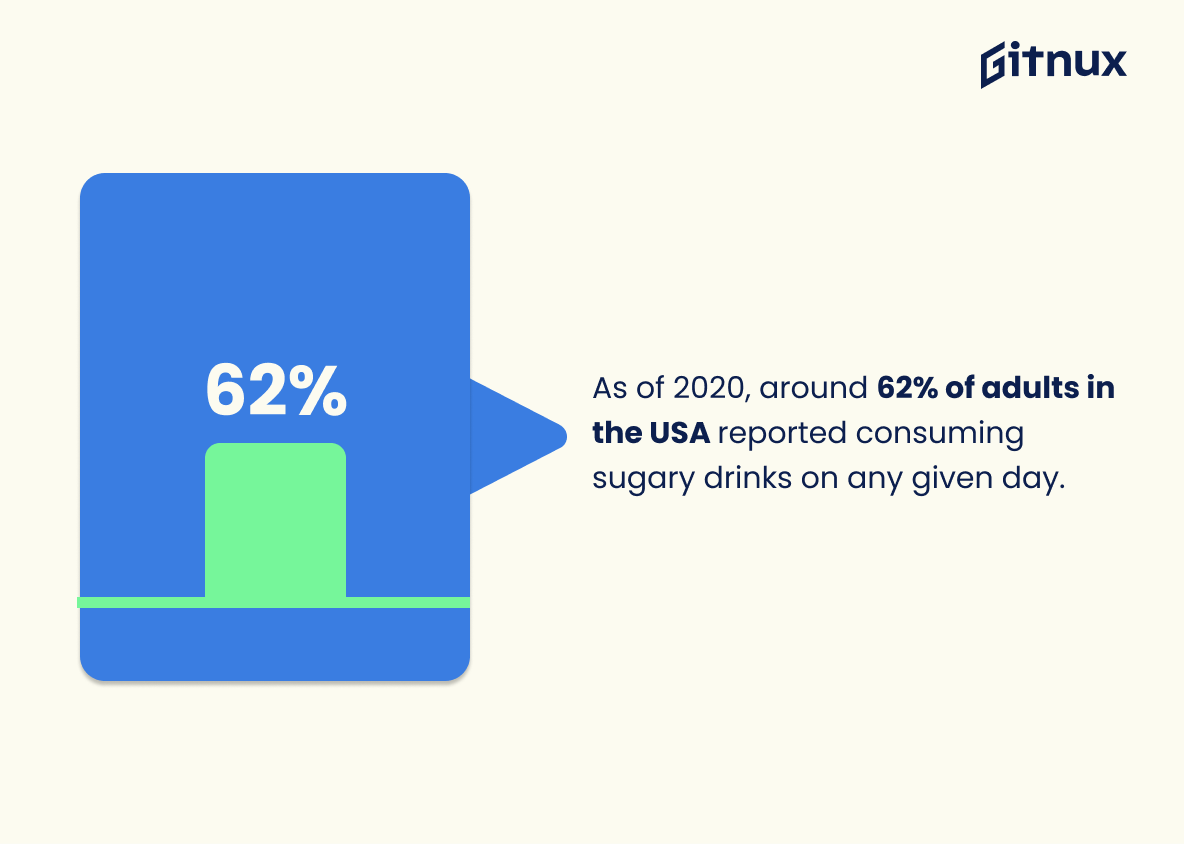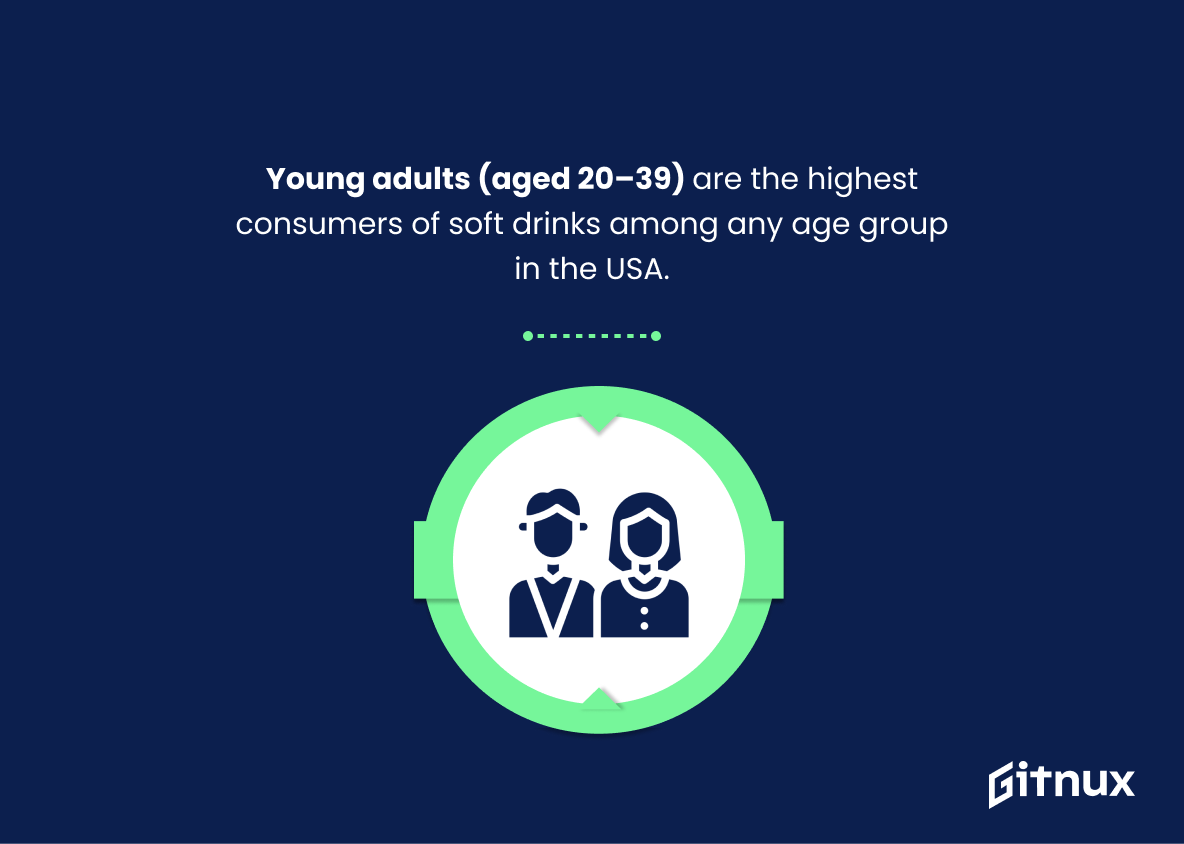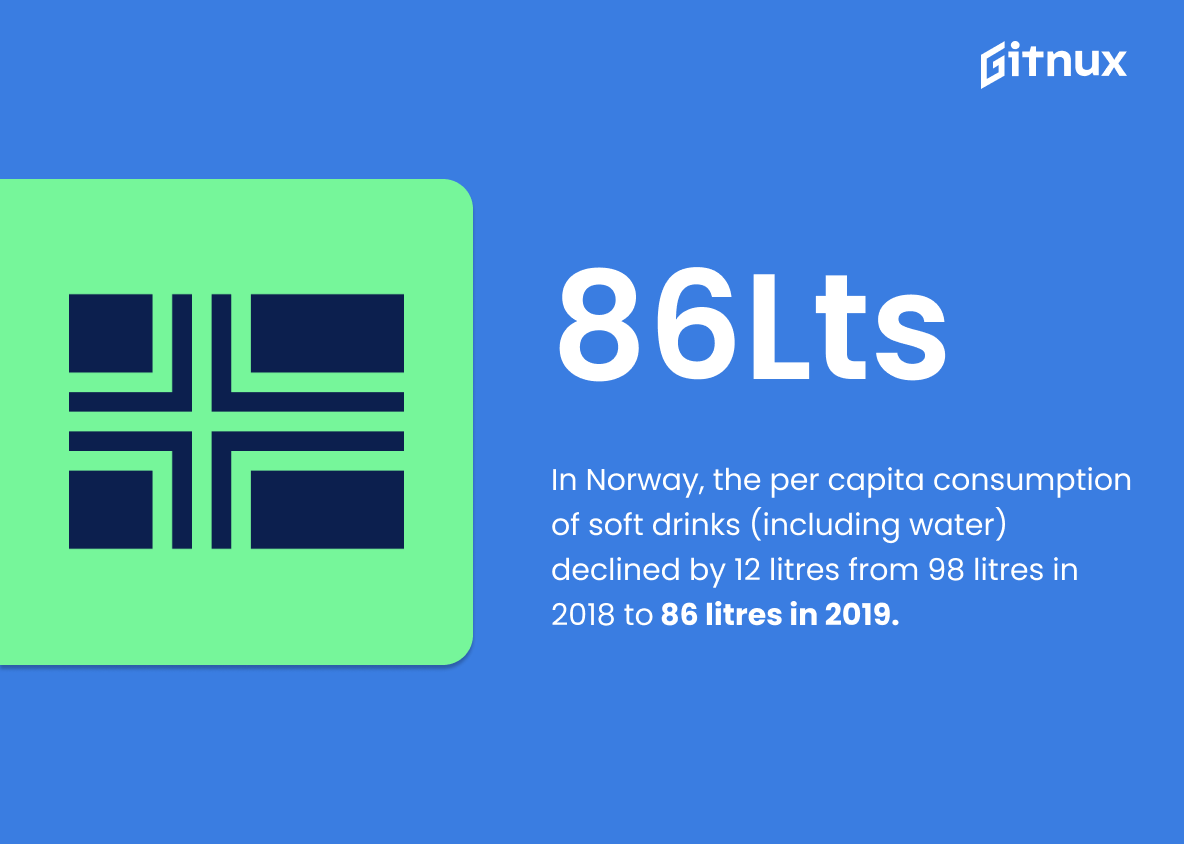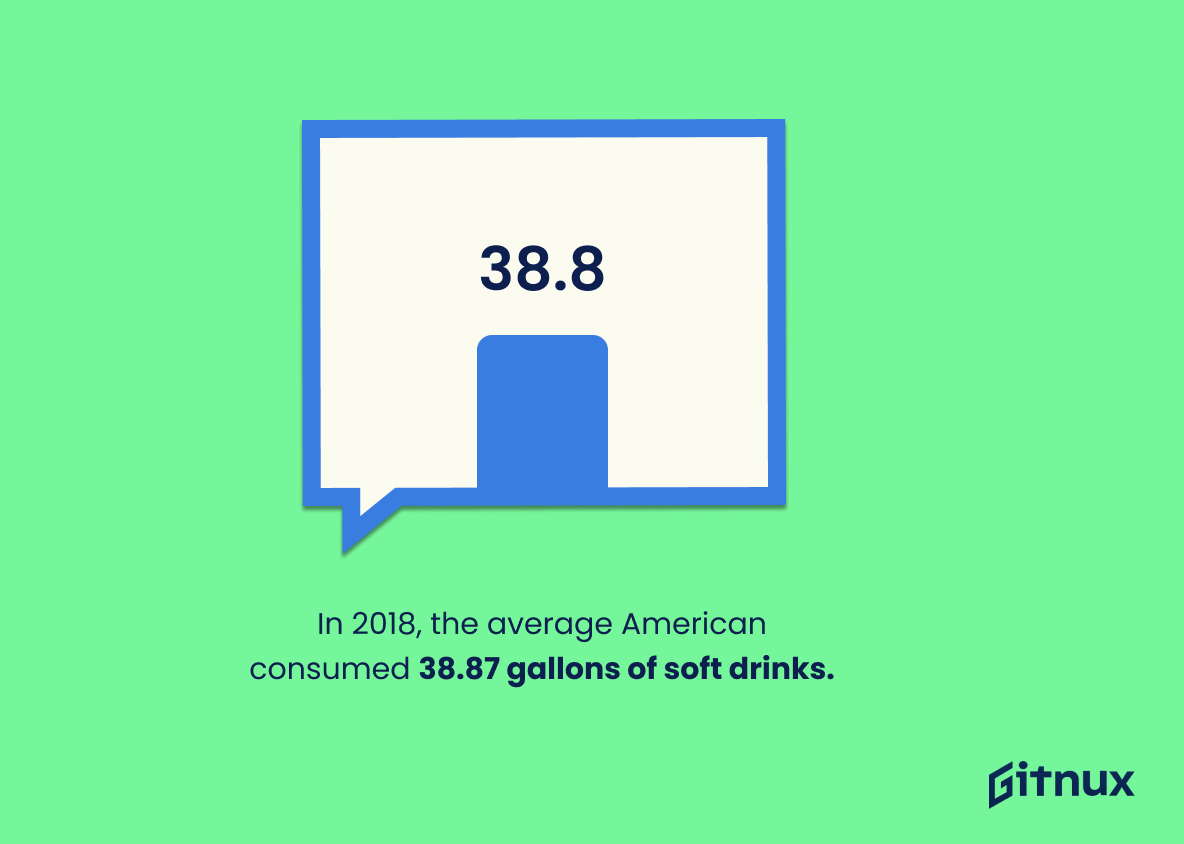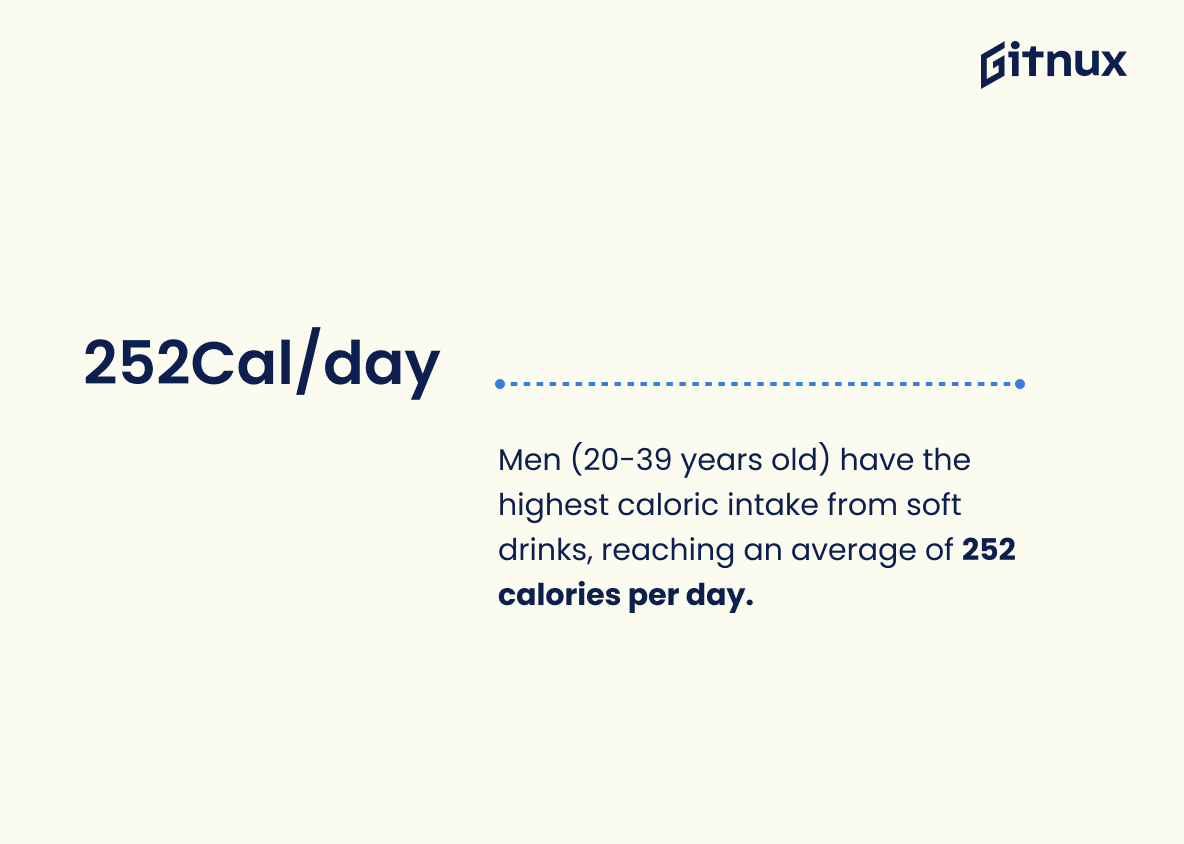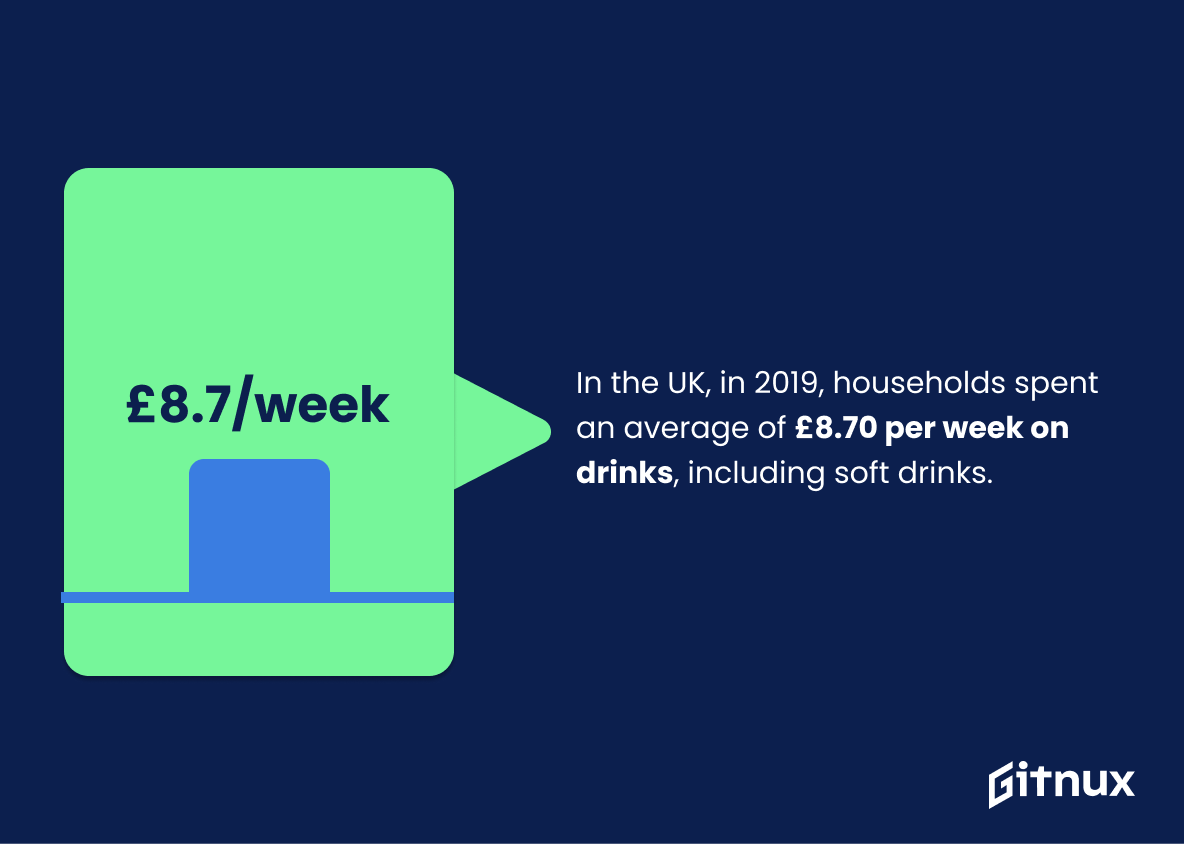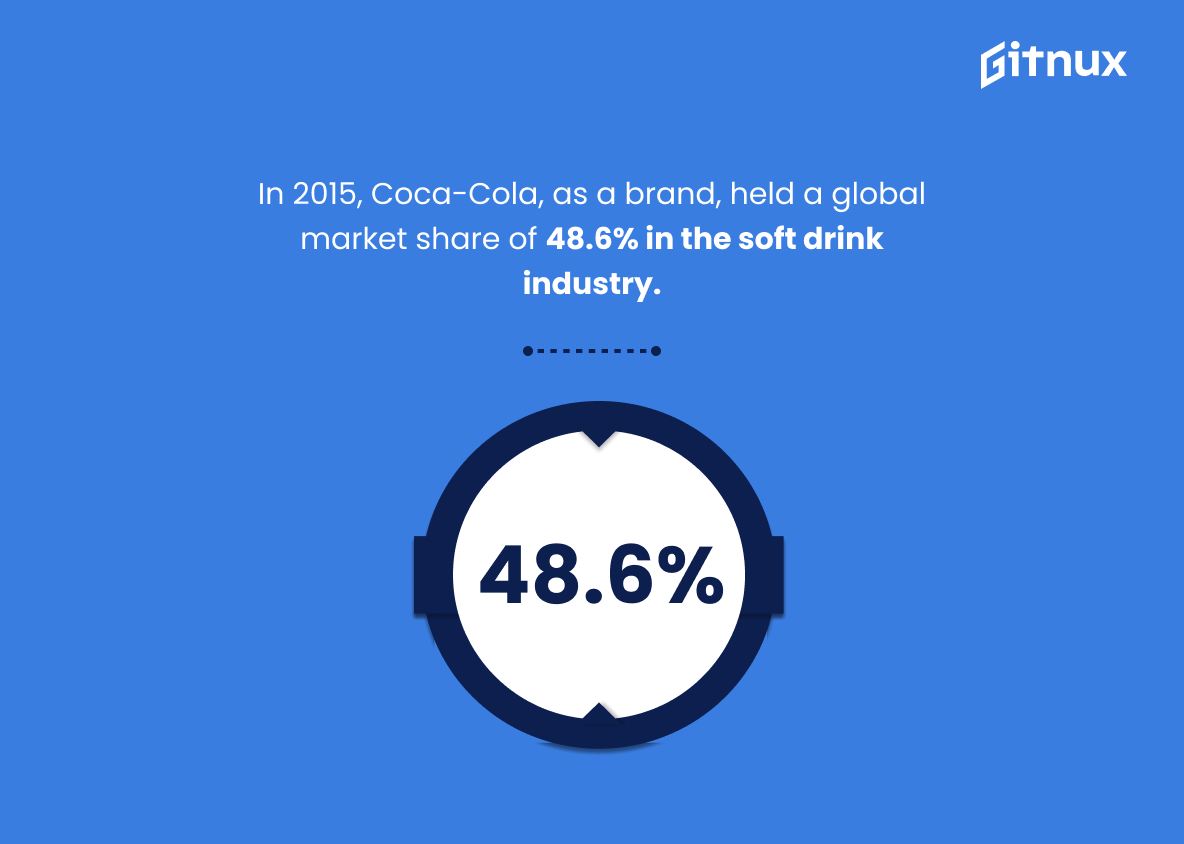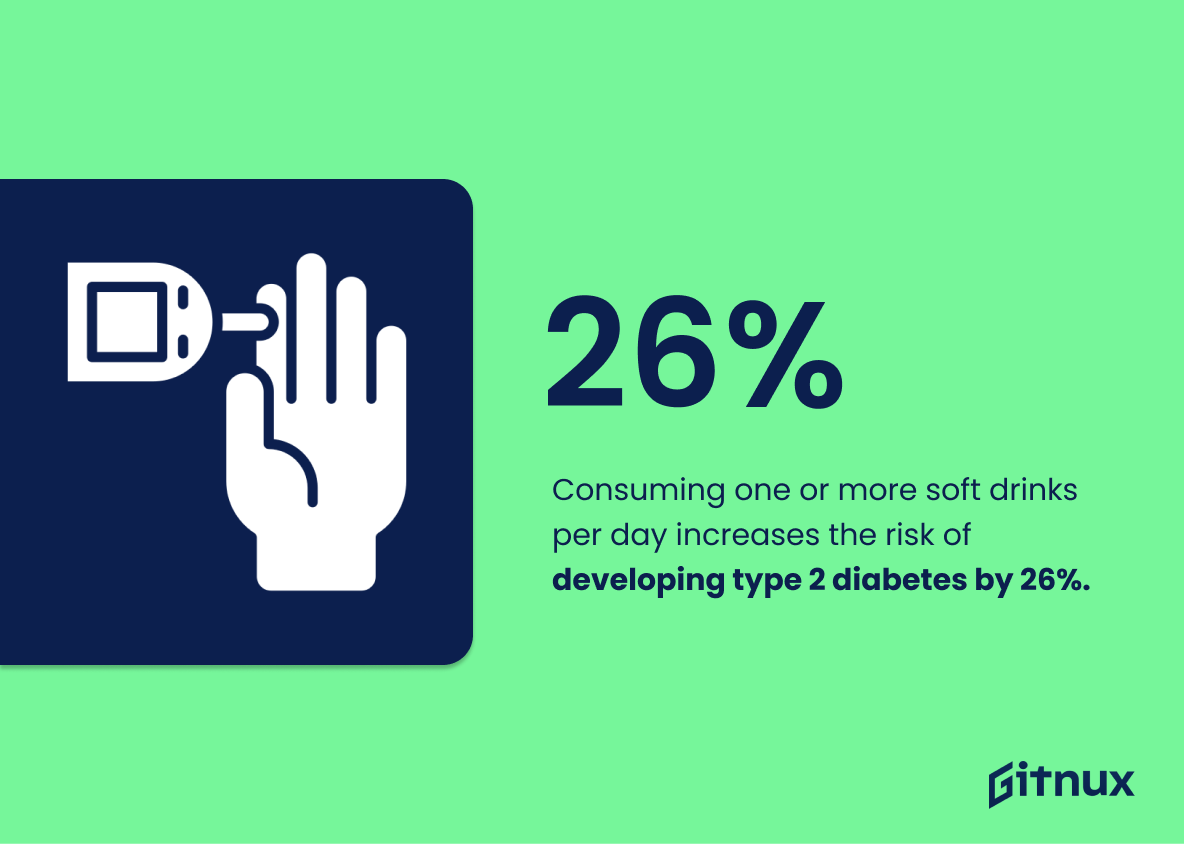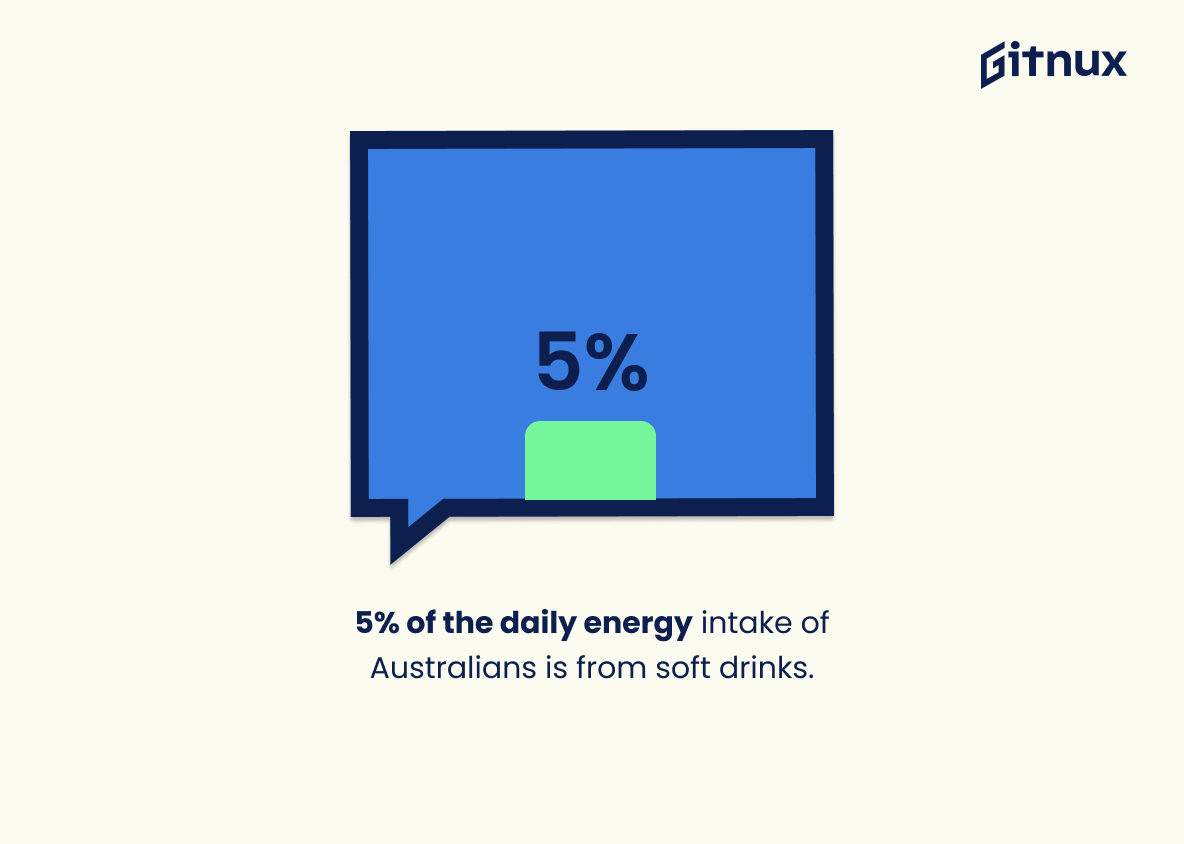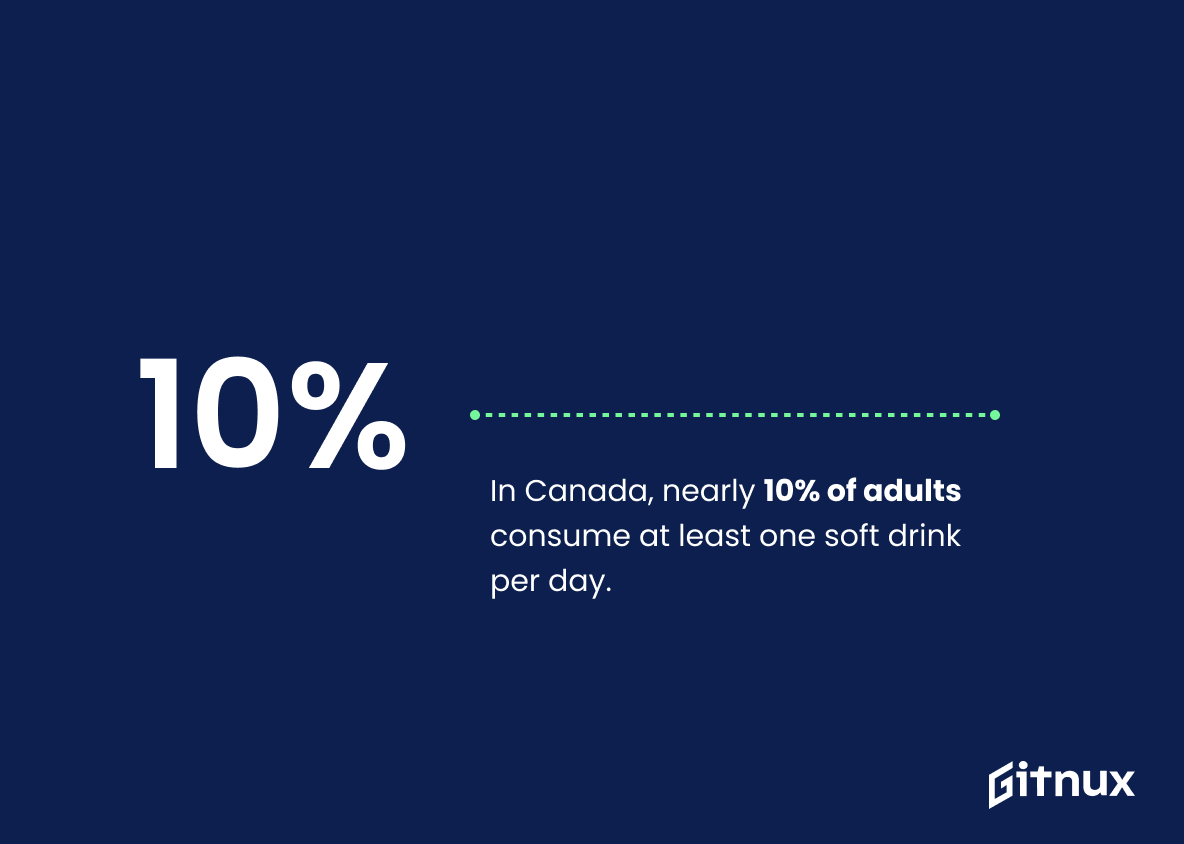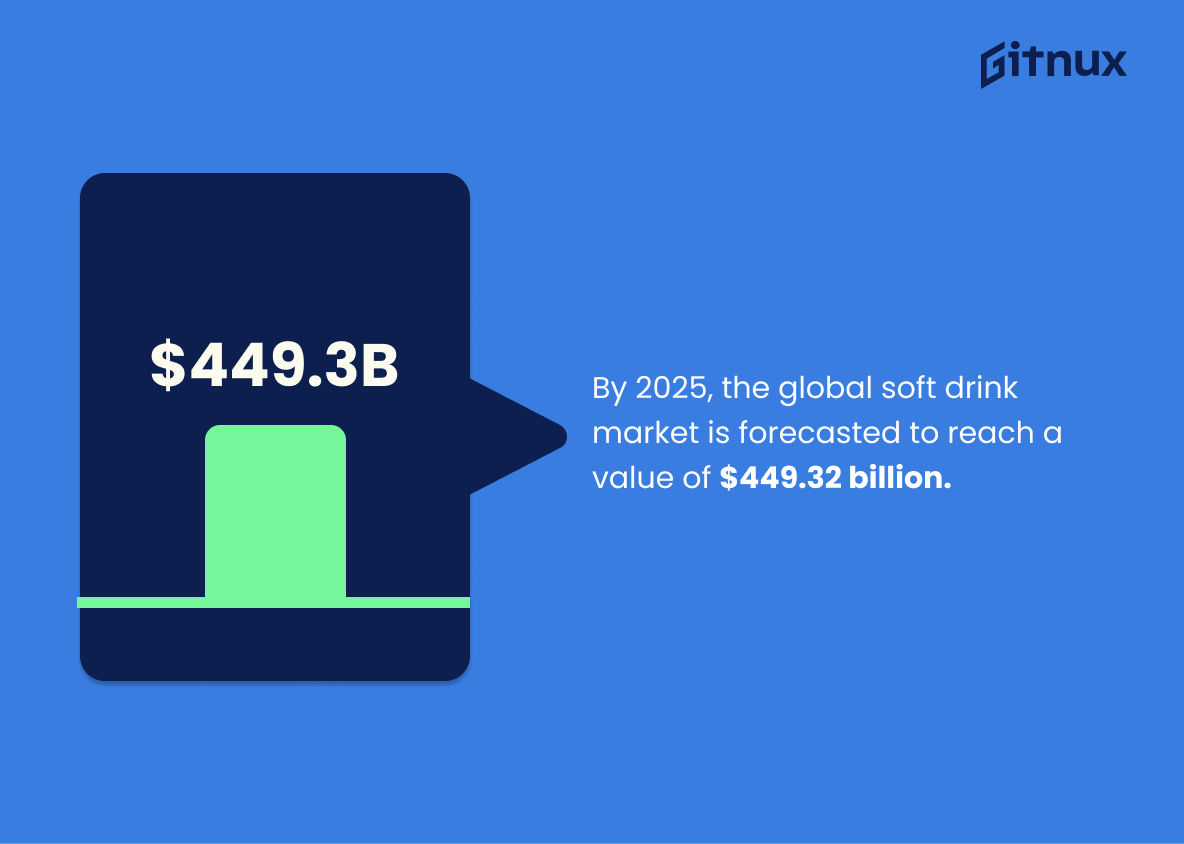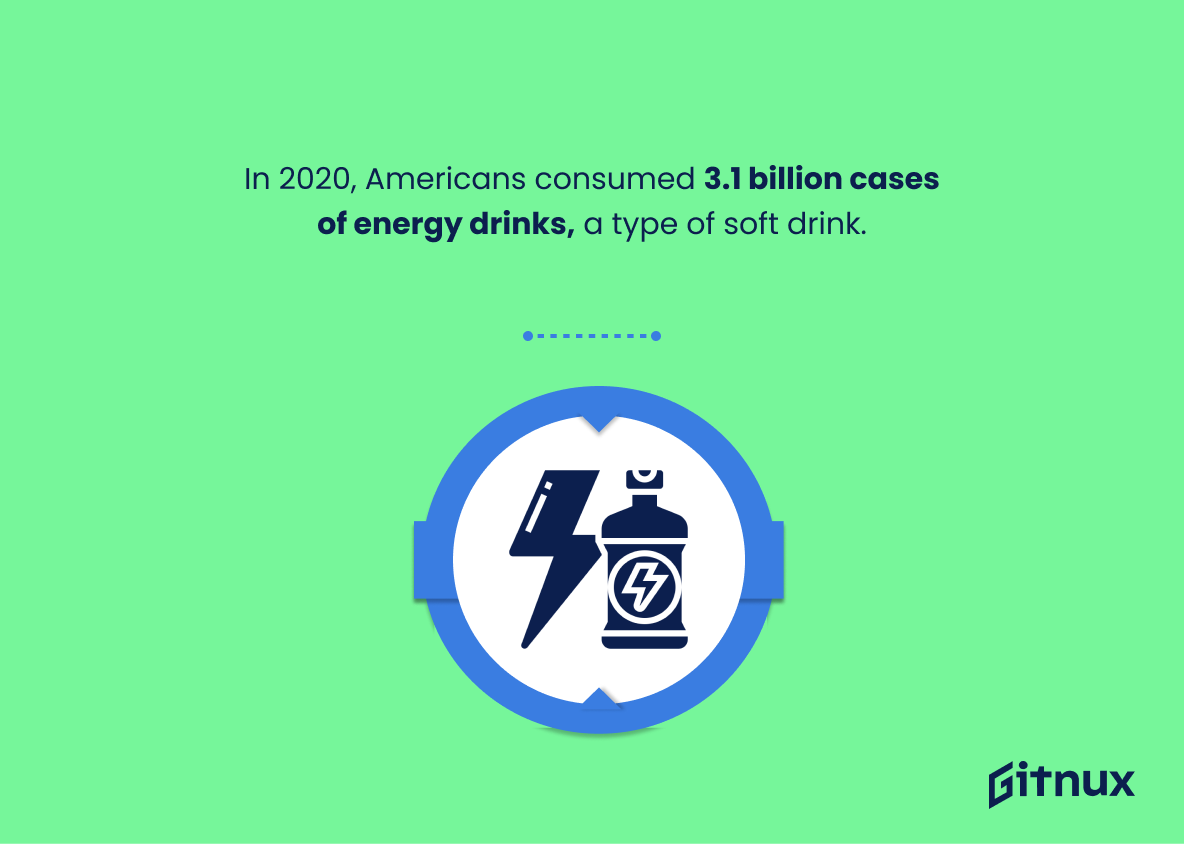As the effervescence rises to the top of your glass, the familiar hissing sound of a just-opened soft drink can is a universal symphony that many of us can’t resist. Soft drinks have become a staple in our diets, often accompanying meals, quenching our thirst in the heat, or even as our caffeine kick in the morning. Indeed, the global love affair with fizzy drinks is neither fizzling out nor slowing down anytime soon. Let’s dive into the intriguing and complex world of soft drink consumption – a journey illustrated and made clearer with the aid of revealing statistics. Are we consuming more or less? How have health drives impacted consumer choices? Stick around to discover hard-hitting facts and decipher trends across different demographics and regions about the soft drink industry. Buckle up as we uncork the world of soft drink consumption statistics.
The Latest Soft Drink Consumption Statistics Unveiled
In 2018, the per capita consumption of soft drinks in the United States amounted to approximately 38.87 gallons.
Painting a vivid picture of American thirst for soft drinks, the 2018 data highlights an impressive figure. With a staggering per capita consumption of approximately 38.87 gallons, we get an insightful glance into the beverage landscape of the United States. This nugget of information forms a cornerstone of our understanding, accentuating the substantial place that soft drinks have claimed in American food culture. It also opens up avenues for exploring the related health, economic, and social implications, thus proving instrumental for the comprehensive discussion in this blog post about Soft Drink Consumption Statistics.
Globally, sugar-sweetened beverage or ‘soft drink’ consumption is estimated to be one million deaths per year.
Drawing attention to this striking statistic, it underscores the magnitude of the global health impact that soft drink consumption can impose. This alarming prediction of a significant death toll directly correlates to the wide-scale consumption of these sugar-infused beverages, boldly displaying the severe, often overlooked repercussions. A figure as dramatic as this heightens the sense of urgency and brings the danger closer to home for readers, making them second-guess their intake or even consider healthier alternatives. Therefore, in the frame of a blog post on Soft Drink Consumption Statistics, such an ominous statistic gives readers pause, promoting a rethink on the health implications of their beverage choices, ultimately hoping to inspire changes in consumption habits.
Mexico, with around 163 litres per capita per year, has the highest soft drink consumption globally in 2021.
Underscoring Mexico’s status as the reigning heavyweight in global soft drink consumption illuminates the indispensable role, preferences, and consumer behavior of its populace within the soft drink market. The staggering figure of 163 litres per capita per year not only sets the benchmark for intake levels worldwide, but also indelibly influences market dynamics and trends in 2021. Unraveling these trends, in turn, provides key insinuations for both producers and policy-makers grappling with the multifaceted implications of high soft drink consumption, such as health concerns, environmental impact, and economic implications.
As of 2020, around 62% of adults in the USA reported consuming sugary drinks on any given day.
Imagine a world where almost two-thirds of the adult population in the USA are reaching for a can, bottle, or glass filled with one form of sugary drink or another in a single day. It paints quite a vivid picture, doesn’t it? Now transition this vision into the reality of soft drink consumption statistics, where an astounding 62% of adults corroborate this scenario as of 2020.
This compelling figure catalyzes a deep dive into the scope of soft drink industry’s vast reach and its influence on consumer habits. It serves as a powerful beacon shedding light on crucial questions – How pervasive is the soft drink culture? What role does it play in our nutritional patterns? How is it intertwined with our health and lifestyle? By tackling these points, one can delve deeper into the significance of such consumption patterns and their subsequent ripple effects on public health, economic trends, and societal norms.
Young adults (aged 20–39) are the highest consumers of soft drinks among any age group in the USA.
Illuminating the vibrant landscape of soft drink consumption, the revelation that young adults, outshining all other age brackets, sip soft drinks most frequently makes for a riveting standpoint. As the focal point for companies looking to evolve their marketing strategies, this statistic may guide decisions about advertising, product development, and even sales locations. Delving into the deep-rooted habits and preferences of this demographic could pave the way for effective brand engagement, ensuring that soft drink manufacturers stay afloat, or even surge ahead in a saturating market.
Moreover, from a health aspect, this observation underscores the rising need and opportunity for influencing healthier dietary choices among young adults. Their central role as soft drink consumers could also trigger pivotal discussions around sugars and caloric intake, stirring broader public health initiatives and debate on the way we quench our thirst. The broader conversation on soft drink consumption cannot truly radiate without acknowledging these soft drink aficionados who often undeniably set the trends in beverage culture.
In Norway, the per capita consumption of soft drinks (including water) declined by 12 litres from 98 litres in 2018 to 86 litres in 2019.
Reflecting upon the importance of the statistic from Norway’s context, it paints a compelling picture of shifting beverage consumption habits. The 12-litre decline from 98 litres per capita in 2018 to 86 litres in 2019 signifies a marked departure from traditional soft drink preference within just a year. For any blog post dissecting soft drink consumption trends, it provides a crucial perspective, potentially underlining the impact of health consciousness, government intervention or changing consumer tastes in a region known for its high soft drink intake. It’s powerful insights like these that allow readers to grasp the scale and speed of change in global consumer behaviours, making this statistic a vital contribution to the dialogue on soft drink consumption.
In 2018, the average American consumed 38.87 gallons of soft drinks.
Delineating the impressive gulp of data, the figure 38.87 throws light on the enthusiastic consumption of soft drinks by an average American in 2018. Its magnitude is not just a mere decimal value, it’s a bold portrait of America’s fizzy appetite. When painting a vivid picture of Soft Drink Consumption Statistics through the blog post, it’s hard to resist the allure of this effective numeral. It bubbles up crucial insights about consumer trends, helping readers to better understand the deep-seated fascination with carbonated beverages among the American audience. Furthermore, the figure offers a fruitful ingredient for discussions about health statistics, sugar intake, and lifestyle preferences. So, as we quench our thirst for knowledge with this data point, it enriches our understanding of the complex behavioral patterns connected to soft drink consumption.
Men (20-39 years old) have the highest caloric intake from soft drinks, reaching an average of 252 calories per day.
Unveiling the capstone of our blog post on Soft Drink Consumption Statistics, it’s worth zooming into a compelling find: Men aged between 20-39 years old have chalked up the highest daily caloric intake from soft drinks, tallying a whopping average of 252 calories. This intriguing piece of data goes beyond the mere digits, providing us with chiseled insights into the drinking habits of different age and gender demographics.
Moreover, this stat draws attention to the important dialogue concerning the nutritional impact of soft drinks. Highlighting this particular demographic testifies to the invisible ties linking soft drinks and potential health risks, such as obesity and diabetes, especially among young adult males.
Similarly, it lends a sharper focus to direct targeted interventions by health professionals and policy makers. By bringing to light these habits of soft drinks over-consumption in the male populace within the age bracket of 20-39 years, it can spur significant actions aimed at promoting healthier beverage options and consumption habits.
Finally, this stat offers a springboard for further studies and discourse on the role of soft drinks in daily caloric intake and broader issues of public health and nutrition. It invites us to ponder on the dietary patterns influencing such consumption, raising further questions for nutritionists and statisticians alike to explore.
In the UK, in 2019, households spent an average of £8.70 per week on drinks, including soft drinks.
This statistic serves as an intriguing cornerstone in the edifice of our understanding of soft drink consumption in the UK. It unveils substantial spending on drinks, including soft drinks, thereby suggesting a resilient demand for these products despite potential health concerns. Moreover, the weekly £8.70 expense underscores the economic clout of households in shaping the soft drink industry. Their purchasing power not only fuels industry growth but also guides manufacturers in product development and marketing strategy. Ideally, surveying such expenditure data could reveal consumption patterns and forecast trends, fostering an enriched dialogue on soft drinks for producers, consumers, and policy makers alike.
In 2015, Coca-Cola, as a brand, held a global market share of 48.6% in the soft drink industry.
When glancing at the glistening liquid realm of the soft drink industry, one can’t help but be awe-struck by the towering figure that was Coca-Cola in 2015. Its global market share almost tipping the halfway mark at 48.6% is no small feat in such a thriving and diverse industry. This figure is not just a statistic, it’s a testament to Coca-Cola’s monumental influence and global reach. When we think about soft drink consumption around the world, this figure casts a formidable shadow, reminding us of Coca-Cola’s deep-rooted presence in our drink preferences and choices. The reflection on this extensive market dominance serves as a fruitful stimulus for our blog post exploring the dimensions of the soft drink industry in terms of consumption statistics. Every pop, fizz and clink of a Coca-Cola bottle worldwide, bolstered this numerical power, reinforcing its sparkling sovereignty in the soft drink universe.
Consuming one or more soft drinks per day increases the risk of developing type 2 diabetes by 26%.
In the effervescent world of soft drink consumption, numbers convey strong messages. The statistic that drinking just one or more soft drinks daily can amplify the risk of type 2 diabetes by a substantial 26% offers a potent and thought-provoking perspective in our blog post.
It acts as a wake-up call, shining a spotlight on the potential health repercussions of a seemingly innocuous daily beverage choice. It emphasizes how each sip of the sugary concoction could be moving you closer to a serious health condition, consequently nudging the audience to reconsider their consumption habits.
This compelling data point is more than just a drop in the ocean; it’s the tidal wave that disrupts the tranquility, challenging widely held assumptions, and igniting a thirst for healthier choices. In essence, it transforms a simple statistic into a powerful conversation starter on the subject of soft drink consumption and its impacts on public health.
5% of the daily energy intake of Australians is from soft drinks.
Highlighting the fact that a full 5% of daily energy intake in Australians comes from soft drinks paints a vivid picture of how deeply ingrained these beverages have become in modern diets. With this information, we provide readers an essential piece of the puzzle in understanding the scope of soft drink consumption in Australia. At the same time, it puts a spotlight on potential nutritional concerns that come with such habits, triggering important discussions about dietary choices, health implications, and the influence of the beverage industry. This quantifiable data, therefore, acts as a compelling illuminator of the beverage consumption landscape as well as the need for informed dietary decisions.
In Canada, nearly 10% of adults consume at least one soft drink per day.
This intriguing statistic paints a vivid picture of Canada’s soda-drinking habits, firmly positioning the beverage as a regular fixture in the daily lives of nearly one in ten adults. On a larger scale, it invites us to ponder the role soft drinks play in our overall diet, health trends, and even our cultural behaviors. By anchoring the discussion in a specific percentage, it endows the abstract concept of national beverage consumption with solid quantifiable dimensions. It provides a reference point to compare with other countries or groups and to investigate further into the factors driving this consumption. Additionally, it signals a massive potential market for soft drink manufacturers, or conversely, policy makers looking to regulate sugary beverage intake, making it a powerful data point in the blog post about Soft Drink Consumption Statistics.
By 2025, the global soft drink market is forecasted to reach a value of $449.32 billion.
Highlighting the projected value of the global soft drink market to be $449.32 billion by 2025 underscores the enormity of the worldwide thirst for these beverages. The striking figure serves as a testament to the undeniable allure of these fizzy drinks, marking them as a staple in global consumption habits. Drafted in the vanguard of global market appetites, it demonstrates the considerable economic footprint of this specific industry, offering a tantalizing glimpse into the lucrative future of soft drink companies. The figure is a potent reminder of the vast opportunities for businesses in this sector, thereby underscoring the importance of continuous innovation within the industry to cater to the ever-evolving consumer palettes for continued market success.
In 2020, Americans consumed 3.1 billion cases of energy drinks, a type of soft drink.
Reflecting on the gasping figure of 3.1 billion cases of energy drinks guzzled by Americans in 2020 not only verifies the soaring popularity of this particular subset within the beverage industry, but also sheds a significant light on the shift in consumer preferences. In an analytical journey through soft drink consumption landscape, this figure serves as a compelling evidence of energy drinks marking their territory. It dictates a narrative of the dynamic nature of the soft drink market and aids in unraveling trends, habits, and health implications worth exploring – key ingredients for a hard-hitting blog post on soft drink consumption statistics.
Consumption of high levels of soft drinks can lead to a 20-40% increased risk of heart disease.
Illuminating the heart of this blog post, the statistic that ‘Consumption of high levels of soft drinks can lead to a 20-40% increased risk of heart disease’ emerges as a vital pulse. This data point serves as a poignant undercurrent, weaving a narrative that transcends mere consumption habits and cascades into the realm of health consequences.
It casts a revealing light on the potential systemic impacts of regular soda ingestion, transforming numbers into a narrative that speaks to our personal health. This alarming revelation is not merely a figure, but a siren call advocating for mindful consumption, infusing urgency and relevance into the discussion on soft drink consumption statistics.
With this statistic, the blog post morphs into a public health dialogue, compelling readers to not only digest the data but question their own consumption patterns and ultimately, their impact on their wellbeing. It invites them into a broader conversation about health, wellness, and the choices we make daily. It underpins the necessity of data literacy in our choices, reshaping the way we perceive our beverages, from a simple thirst-quencher to a potential heart risk.
In South Africa, 50% of males and 29.2% of females consume sugar-sweetened drinks daily.
The implications of this statistic are rather intriguing, shedding light on the gender divide in the daily consumption of sugar-sweetened beverages in South Africa. By highlighting a significant difference between males and females, it underscores not only the potential dietary preferences par genders, but also brings attention to potential health implications given the commonly-known risks associated with excessive sugar intake. Furthermore, it could signal the effectiveness, or lack thereof, of health awareness campaigns, giving impetus for further exploration into consumption behaviors and lifestyle choices. Such a statistic also invites the beverage industry to reflect over their marketing strategies and perhaps even product formulation, to cater to a more health-conscious audience. This information consequently breathes life into a blog post about soft drink consumption, offering insights that compel deeper thought, discussion, and action.
Conclusion
In conclusion, the data on global soft drink consumption underscores the ongoing demand for these fizzy refreshments. The statistics clearly depict regional preferences, income-related discrepancies, and the tangible impact of health awareness campaigns on people’s drinking habits. As individuals become more conscious of their nutrition, the soft drink industry faces the task of adapting to these changes, perhaps through introducing healthier alternatives or re-evaluating their marketing strategies. At the end of the day, understanding these consumption trends can serve as a valuable tool for not just the beverage industry but also public health organizations working to balance people’s fondness for these beverages with their overall well-being.
References
0. – https://www.www.statista.com
1. – https://www.www.abs.gov.au
2. – https://www.www.ons.gov.uk
3. – https://www.www.cdc.gov
4. – https://www.care.diabetesjournals.org
5. – https://www.www.grandviewresearch.com
6. – https://www.www.ncbi.nlm.nih.gov
7. – https://www.www.beveragedaily.com
8. – https://www.www.ssb.no
9. – https://www.www150.statcan.gc.ca
